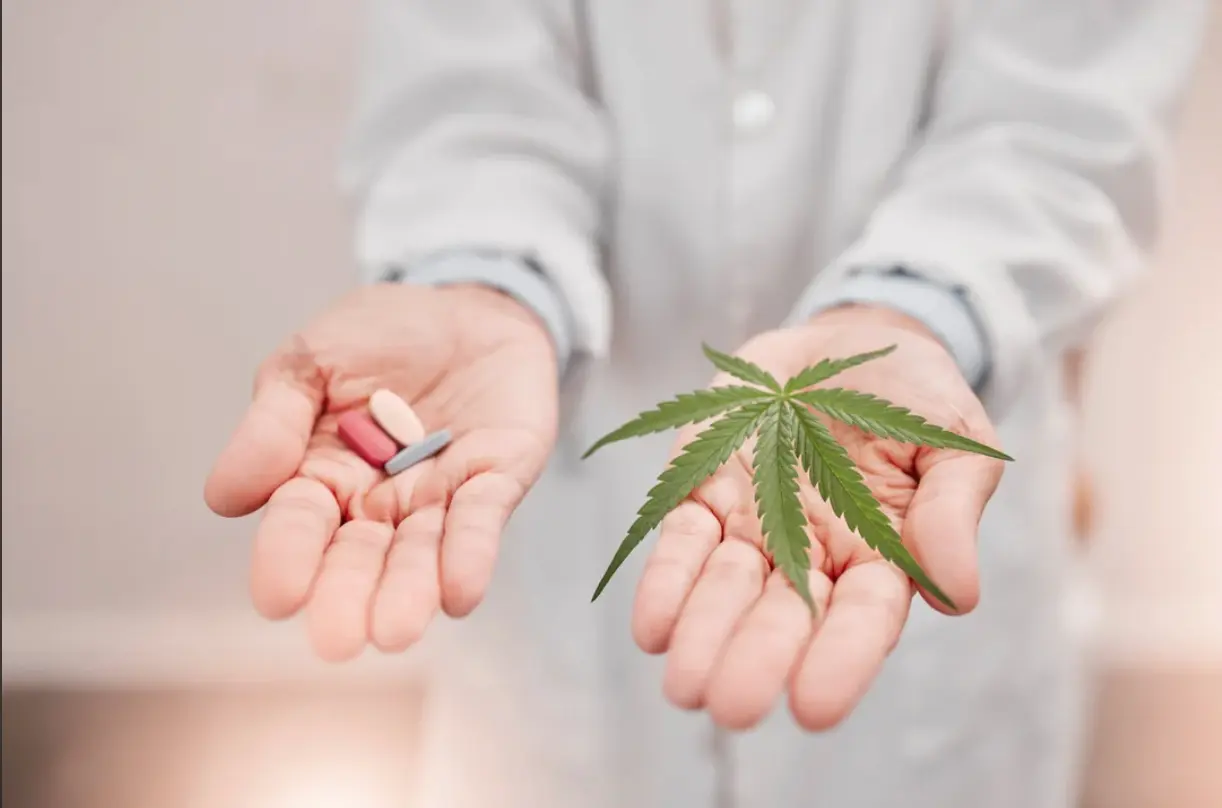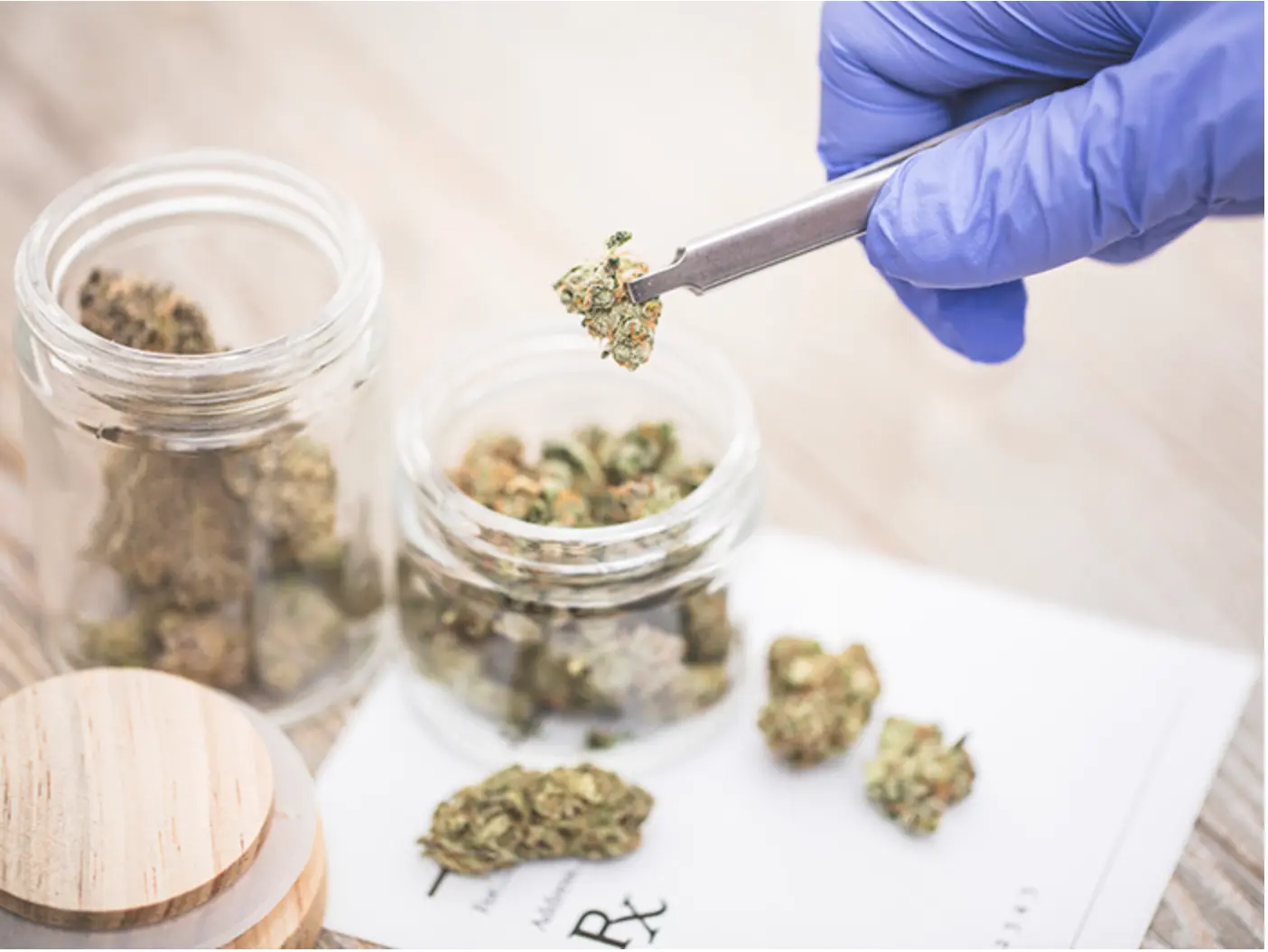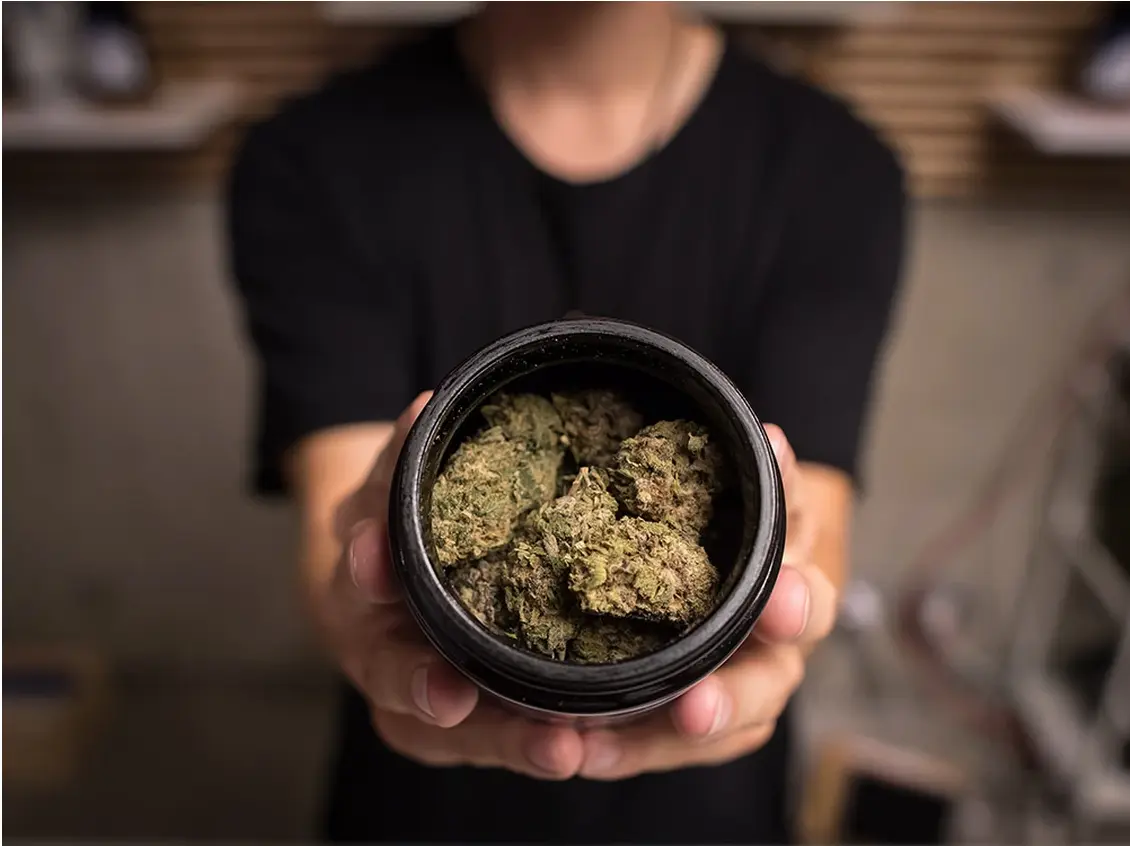
The opioid crisis in Canada has reached alarming proportions, leaving devastating effects on individuals, families, and communities nationwide. With the widespread misuse and addiction to opioids, including prescription painkillers and illicit drugs like fentanyl, Canada has been grappling with a public health emergency of immense proportions. Statistics reveal a staggering increase in opioid-related deaths and overdoses, highlighting the urgent need for effective solutions to combat this crisis.

In the wake of this epidemic, attention has turned towards exploring alternative approaches to pain management, with cannabis emerging as a potential candidate. As attitudes and regulations surrounding cannabis evolve, there is growing interest in its therapeutic potential, particularly in alleviating chronic pain—the primary reason for opioid prescriptions. Cannabis contains various compounds, notably THC and CBD, which interact with the body’s endocannabinoid system to produce analgesic effects. This presents a promising avenue for addressing pain without the harmful side effects and risks associated with opioids.
Against this backdrop, this article aims to delve into the intersection of opioids and cannabis, examining whether cannabis can indeed serve as a viable replacement for opioids in managing pain. Throughout the discussion, key points will be elucidated, shedding light on the comparative efficacy, safety profiles, and regulatory considerations associated with both substances. By analyzing existing research, patient experiences, and regulatory frameworks, we aim to provide a comprehensive understanding of the potential role of cannabis in mitigating the opioid crisis.
Definition and types of opioids
Opioids are a class of drugs commonly prescribed for pain relief due to their ability to bind to opioid receptors in the brain and spinal cord, effectively reducing the perception of pain. These medications can be derived from the opium poppy plant (natural opioids), synthesized in laboratories (synthetic opioids), or semi-synthesized from natural opiates (semi-synthetic opioids). Common examples of opioids include morphine, codeine, oxycodone, hydrocodone, fentanyl, and methadone.
Natural opioids, such as morphine and codeine, are derived directly from the opium poppy plant. Synthetic opioids, like fentanyl and methadone, are manufactured entirely in laboratories, while semi-synthetic opioids, including oxycodone and hydrocodone, are chemically modified from natural opiates. Each type of opioid may vary in potency, duration of action, and potential for addiction.

The scope and impact of the opioid crisis in Canada
Canada is currently facing an opioid crisis of unprecedented proportions, with devastating consequences for individuals, families, and communities nationwide. Over the past decade, the misuse and overprescription of opioids have contributed to a sharp rise in opioid-related deaths and overdoses, prompting public health officials to declare it a national emergency.
Statistics paint a grim picture of the opioid crisis in Canada. According to Health Canada, more than 17,000 opioid-related deaths occurred between January 2016 and March 2021, with rates steadily increasing year by year. The crisis has disproportionately affected certain populations, including Indigenous communities, individuals experiencing homelessness, and those with a history of substance use disorders.
The impact of the opioid crisis extends beyond mortality rates, with significant social and economic ramifications. Families are torn apart by the loss of loved ones, communities are strained by the burden of addiction, and healthcare systems are overwhelmed by the demand for treatment and support services. Moreover, the financial costs associated with healthcare expenditures, law enforcement, and lost productivity place a considerable burden on society as a whole.
Challenges associated with opioid use and addiction
Several challenges are associated with the use and addiction to opioids, contributing to the complexity of the crisis. One primary challenge is the risk of tolerance, dependence, and addiction associated with long-term opioid use. Prolonged exposure to opioids can lead to the development of tolerance, requiring higher doses to achieve the same level of pain relief. This escalation in dosage increases the risk of dependence and addiction, as individuals may become physically and psychologically reliant on opioids to function.
Furthermore, opioids carry a significant risk of adverse effects, ranging from constipation and nausea to respiratory depression and overdose. The potency of synthetic opioids like fentanyl amplifies these risks, as even small doses can result in profound respiratory depression and death. Additionally, the illicit production and distribution of opioids, particularly fentanyl and its analogs, further exacerbate the crisis, as users may unknowingly consume highly potent and dangerous substances.

Addressing the opioid crisis requires a multifaceted approach that encompasses prevention, harm reduction, treatment, and policy interventions. Efforts to improve prescribing practices, expand access to evidence-based treatments such as opioid agonist therapy (e.g., methadone and buprenorphine), and enhance support services for individuals with opioid use disorder are essential components of an effective response. Additionally, raising awareness, reducing stigma, and promoting alternative approaches to pain management, such as medical cannabis, are integral to mitigating the impact of the opioid crisis and saving lives.
Introduction to cannabis and its medicinal properties
Cannabis has been used for medicinal purposes for thousands of years, with historical records dating back to ancient civilizations. In recent decades, scientific research has shed light on the therapeutic properties of cannabis, leading to a growing interest in its potential as a medical treatment. Cannabis contains hundreds of compounds, including cannabinoids, terpenes, and flavonoids, which contribute to its pharmacological effects.
Two primary cannabinoids found in cannabis are delta-9-tetrahydrocannabinol (THC) and cannabidiol (CBD), each with distinct effects on the body. THC is responsible for the psychoactive effects commonly associated with cannabis use, while CBD exhibits non-intoxicating properties and has been studied for its potential therapeutic benefits. Other cannabinoids, such as cannabinol (CBN) and cannabigerol (CBG), also play roles in the plant’s medicinal effects.

Overview of how cannabis interacts with the body’s endocannabinoid system
The endocannabinoid system (ECS) is a complex network of receptors, endocannabinoids (naturally occurring cannabinoids produced by the body), and enzymes involved in regulating various physiological processes, including pain sensation, mood, appetite, and memory. The ECS plays a crucial role in maintaining homeostasis, or balance, within the body.
When cannabis is consumed, cannabinoids like THC and CBD interact with the ECS by binding to cannabinoid receptors located throughout the body. The two primary cannabinoid receptors are known as CB1 and CB2. CB1 receptors are primarily found in the brain and central nervous system, where they modulate neurotransmitter release and influence cognition, memory, and pain perception. CB2 receptors are primarily found in peripheral tissues, including the immune system, where they play a role in regulating inflammation and immune function.
By binding to cannabinoid receptors, cannabinoids can modulate the activity of neurotransmitters and signaling pathways, resulting in various physiological effects. For example, THC activation of CB1 receptors in the brain can produce euphoria, relaxation, and altered perception, while CBD modulation of CB2 receptors in the immune system can reduce inflammation and pain.
Evidence supporting the use of cannabis for pain management
There is a growing body of evidence supporting the use of cannabis for pain management, particularly in chronic pain conditions where conventional treatments may be inadequate or associated with significant side effects. Numerous preclinical and clinical studies have demonstrated the analgesic properties of cannabinoids, including THC and CBD, in various pain models.
One of the mechanisms by which cannabis may alleviate pain is through its modulation of the endocannabinoid system. By activating cannabinoid receptors in the brain and peripheral tissues, cannabis can reduce pain perception and inflammation, providing relief for individuals suffering from conditions such as neuropathic pain, arthritis, fibromyalgia, and cancer-related pain.
Clinical trials have shown that cannabis-based medicines, such as Sativex (a combination of THC and CBD) and nabiximols (an oral spray), can effectively reduce pain intensity and improve quality of life in patients with chronic pain conditions. Additionally, observational studies and patient surveys have reported high levels of satisfaction and symptom relief among medical cannabis users.
Comparison of the side effects of opioids vs. cannabis
One of the key advantages of cannabis as a potential alternative to opioids is its favorable safety profile and lower risk of adverse effects. Unlike opioids, which can cause respiratory depression, sedation, constipation, and addiction, cannabis is generally well-tolerated, with fewer serious side effects.
Common side effects of cannabis use may include dry mouth, dizziness, fatigue, and increased heart rate. These effects are typically mild and transient, resolving with time or dose adjustment. Moreover, cannabis overdose is rare and seldom fatal, especially when compared to the risk of overdose associated with opioids.
Furthermore, cannabis has a lower potential for addiction and dependence compared to opioids. While long-term cannabis use may lead to psychological dependence in some individuals, the risk of physical dependence and withdrawal symptoms is minimal, particularly when compared to the profound physiological dependence observed with opioid use.

Review of studies examining the effectiveness of cannabis for pain relief
Numerous studies have investigated the effectiveness of cannabis as a treatment for pain relief, with findings suggesting that cannabinoids, particularly THC and CBD, possess analgesic properties. A systematic review published in the Journal of the American Medical Association (JAMA) analyzed 79 trials involving over 6,400 participants and concluded that cannabis-based medicines were effective in treating chronic pain conditions, such as neuropathic pain and cancer-related pain.
Additionally, a meta-analysis published in the Journal of Pain Research pooled data from 18 randomized controlled trials and found that cannabis-based medicines were associated with a significant reduction in pain intensity compared to placebo. Moreover, observational studies have reported high levels of patient satisfaction and symptom relief among individuals using medical cannabis for chronic pain management.
Exploration of patient experiences and testimonials
Patient experiences and testimonials provide valuable insights into the real-world effectiveness of cannabis for pain management. Many individuals suffering from chronic pain have reported significant improvements in their symptoms, including reductions in pain intensity, improved sleep quality, and enhanced overall well-being, after using medical cannabis.
For example, a survey conducted by the Arthritis Foundation found that 79% of arthritis patients who had used cannabis for pain relief reported that it helped them manage their symptoms effectively. Similarly, testimonials from cancer patients undergoing chemotherapy often highlight the role of cannabis in alleviating treatment-related side effects, such as nausea, vomiting, and neuropathic pain.
While patient experiences can offer valuable anecdotal evidence, it is important to acknowledge that individual responses to cannabis may vary, and not all patients may experience the same level of relief. Furthermore, factors such as dosage, strain selection, route of administration, and underlying medical conditions can influence the therapeutic outcomes of cannabis therapy.
Discussion of any limitations or controversies surrounding cannabis as an alternative
Despite the growing body of evidence supporting the use of cannabis for pain management, there are several limitations and controversies that warrant consideration. One major concern is the lack of standardized dosing guidelines and quality control measures for cannabis products, which can lead to variability in potency and efficacy.
Additionally, while cannabis may offer relief for certain types of pain, its effectiveness for different pain conditions remains subject to debate. Some studies have suggested that cannabis may be more effective for neuropathic pain than nociceptive pain, while others have found mixed results depending on the patient population and study design.

Moreover, there are concerns regarding the potential for adverse effects and long-term consequences associated with cannabis use, including cognitive impairment, psychiatric disorders, and respiratory complications. While the risk of addiction and overdose is lower compared to opioids, cannabis dependence and withdrawal symptoms can still occur, particularly with chronic use.
Furthermore, the legal and regulatory landscape surrounding cannabis can pose challenges for patients seeking access to medical cannabis, as well as for healthcare providers prescribing and monitoring its use. Variations in legislation and stigma surrounding cannabis use may also deter individuals from exploring it as a potential treatment option for pain.
Overview of the current legal status of cannabis in Canada
In Canada, the legal status of cannabis has undergone significant changes in recent years. In October 2018, Canada became the second country in the world, after Uruguay, to legalize the recreational use of cannabis nationwide. The Cannabis Act, which came into effect on October 17, 2018, regulates the production, distribution, sale, and possession of cannabis for recreational purposes.
Under the Cannabis Act, adults aged 18 or older (19 in some provinces) are permitted to purchase and possess up to 30 grams of dried cannabis or its equivalent in other forms, such as edibles, concentrates, and topicals. The Act also allows for the cultivation of up to four cannabis plants per household for personal use.
In addition to recreational cannabis, Canada has also implemented a regulatory framework for the medical use of cannabis. The Access to Cannabis for Medical Purposes Regulations (ACMPR), established in 2016, govern the production, distribution, and use of cannabis for medical purposes. Patients with valid medical authorization from a healthcare practitioner are authorized to purchase cannabis from licensed producers or grow it themselves for personal medical use.
Despite the legalization of cannabis for medical and recreational use, there are still challenges and barriers to using cannabis as a medical alternative to opioids. One of the primary challenges is the lack of education and awareness among healthcare providers and patients about the potential benefits and risks of medical cannabis.
Many healthcare providers may be unfamiliar with cannabis as a therapeutic option or may hold misconceptions about its efficacy and safety. Additionally, stigma surrounding cannabis use, particularly in medical settings, may deter patients from discussing it with their healthcare providers or exploring it as a treatment option for pain management.
Furthermore, there are practical barriers to accessing medical cannabis, including limited availability of products, high costs, and restrictions on insurance coverage. Patients may also face challenges navigating the complex regulatory requirements for obtaining medical authorization and purchasing cannabis from licensed producers.
Potential future developments in cannabis regulations and access
As the legal and regulatory landscape surrounding cannabis continues to evolve in Canada, there are several potential future developments that could impact access to medical cannabis and its use as an alternative to opioids. One possibility is the expansion of medical cannabis programs to improve accessibility and affordability for patients.
Additionally, ongoing research into the therapeutic properties of cannabis, particularly its efficacy for pain management, may lead to the development of new formulations and delivery methods that enhance its effectiveness and reduce the risk of adverse effects. This could include the development of standardized dosing guidelines, quality control measures, and patient education initiatives to support safe and responsible use of medical cannabis.
Moreover, changes in public policy and attitudes towards cannabis, both domestically and internationally, may influence future regulatory decisions and initiatives. For example, increased recognition of the potential role of cannabis in addressing public health challenges, such as the opioid crisis, may lead to policy reforms aimed at expanding access to medical cannabis and promoting its integration into mainstream healthcare practice.
Overall, while there are challenges and barriers to using cannabis as a medical alternative to opioids, ongoing regulatory developments and research efforts hold promise for improving access and optimizing the therapeutic potential of cannabis for pain management in Canada.
In conclusion, cannabis emerges as a promising alternative to opioids for pain management, offering analgesic properties with a lower risk of addiction and overdose. Its interaction with the endocannabinoid system and growing body of evidence supporting its efficacy underscore its potential to alleviate pain and improve the quality of life for patients.
Moving forward, it is imperative to continue research efforts to elucidate the optimal use of cannabis in pain management, including standardized dosing regimens, efficacy in different pain conditions, and long-term safety considerations. Further exploration of cannabis-based medicines and delivery methods is essential to maximize therapeutic benefits and minimize potential risks.
As Canada grapples with the ongoing opioid crisis, cannabis offers a ray of hope in mitigating the devastating effects of opioid addiction and overdose. By expanding access to medical cannabis and promoting its integration into comprehensive pain management strategies, Canada has the opportunity to reduce reliance on opioids and improve outcomes for patients across the nation. Embracing evidence-based approaches and fostering collaboration among healthcare providers, policymakers, and researchers will be key in realizing the full potential of cannabis in addressing the opioid crisis and advancing public health in Canada.
Order weed online in Winnipeg. Puff Wow makes it easy to buy Cannabis online with our secure checkout and fast delivery.
Winnipeg, Manitoba
Canada

